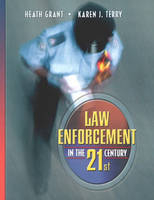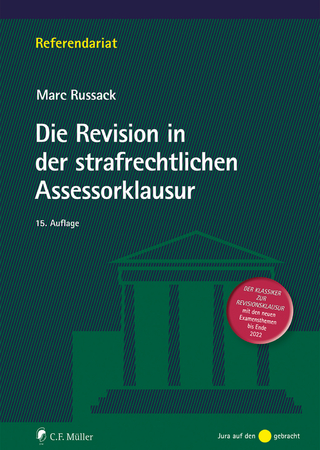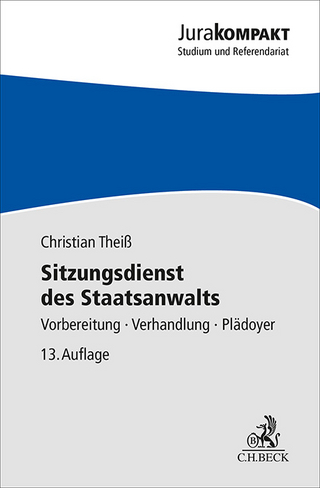
Law Enforcement in the 21st Century
Pearson (Verlag)
978-0-205-33633-3 (ISBN)
- Titel erscheint in neuer Auflage
- Artikel merken
Law Enforcement in the 21st Century is the first book to attempt to correct the “linkage blindness” in the criminal justice system. The text makes linkages between theory and police practice through problem-solving and crime mapping applications. It offers a fresh, new approach to presenting introductory law enforcement material that is both practical for the future law enforcement officer and intellectually rewarding for the reader entering a whole new field of study. The authors have organized the material in a developmental framework beginning with a discussion of law enforcement¿s place within the criminal justice system and a discussion of the origins of policing; the reader is then introduced to the traditional model of policing and the core aspects of the work¿organizational structure and units, field operations, and investigations.
Please note that each chapter begins with a Chapter Outline, Chapter Objectives and an Introduction and ends with a Chapter Summary, Key Terms, “Linking the Dots” critical thinking questions, and Chapter End Notes.I. LAW ENFORCEMENT IN THE CRIMINAL JUSTICE SYSTEM
1. Law Enforcement in a Democratic Society.
Themes of the Book.
The Police Function: Social Control and the Use of Force.
Policing within the Rule of Law: The Challenges of Discretion.
The Delicate Balance: Crime Control versus Due Process.
The Levels of Law Enforcement.
LINKAGES IN LAW ENFORCEMENT: An Introduction to the Linkage-Blindness Phenomenon.
Reorganization: The Creation of the Department of Homeland Security.
LINKAGES IN LAW ENFORCEMENT: Coordination and Information Sharing Between Law Enforcement and the Rest of the Criminal Justice System.
From Suspect to Charge: The Role of the Police.
Determining Guilt: The Role of the Courts.
Administering Punishment and Reforming the Offender: The Role of Corrections.
Chapter Summary.
2. Origins and Development of Law Enforcement.
Early Origins of Social Control.
Development of Formal Policing in England.
LINKAGES IN LAW ENFORCEMENT: Posse Comitatus Today.
Development of Formal Policing in the United States.
The Political Era (1840-1930).
Origins of the Reform Era.
3. Traditional Policing and Police Professionalization.
Policing as a Profession.
LINKAGES IN LAW ENFORCEMENT: What Would a “Professional” Law Enforcement Agency Look Like?
Crime Control as a Focal Concern: Implication for Resource Deployment.
Counting Crime: The Uniform Crime Reports.
The Dark Figure of Crime.
LINKAGES IN LAW ENFORCEMENT: Incident-Based Reporting and the National Incident-Based Reporting System.
Measuring the Effectiveness of the Traditional Model of Policing.
Back to Basics: The Beginnings of the Community Era of Policing.
4. Law Enforcement and the Law.
Order of Authority.
Law Enforcement and Constitutional Law.
LINKAGES IN LAW ENFORCEMENT: Freedom of Speech, Assembly, and Religion and the War on Terror.
Law Enforcement and Criminal Law.
Law Enforcement and Civil Law.
II. LAW ENFORCEMENT AND POLICE WORK.
5. Police Functions and Units.
The Goals of Policing.
A Police Mission: New York City's Police Department's Mission Statement and List of Values.
Organizational Structure and Accountability.
LINKAGES IN LAW ENFORCEMENT: Implications of Cross-Agency Cooperation for Organizational Structure.
Divisions and Units.
6. Patrol and Traffic.
The Realities of Patrol.
The Patrol Function.
Types of Patrol.
The Effectiveness of Patrol.
Patrol Methods.
Patrol Deployment.
Traffic Goals and Enforcement.
LINKAGES IN LAW ENFORCEMENT: Role of Patrol in Detecting Terrorist Activities.
7. Search and Seizure, Arrest, and Interrogation.
Search and Seizure.
LINKAGES IN LAW ENFORCEMENT: Searches and Terrorism—The USA PATRIOT Act of 2001.
Arrest.
Interrogation.
Privacy and the Internet.
8. Investigation and Evidence Collection.
The Development of the Investigative Function.
The Realities of Investigation.
The Preliminary Investigation.
The Follow-up Investigation.
Types of Crime Scenes.
The Locard Exchange Principle.
Establishing a Physical Link.
Behavioral Evidence: Signature and Modus Operandi.
Information, Clearance Rates, and Investigation.
LINKAGES IN LAW ENFORCEMENT: The Role of Technology in Reducing Linkage Blindness.
Investigating Terror: Models of Counterterrorism.
Challenges of Police-Prosecutor Collaboration.
III. POLICE CONDUCT.
9. Policing Discretion and Behavior.
The Role of Discretion in Policing.
The Importance of Police Behavior.
Police Stress.
LINKAGES IN LAW ENFORCEMENT: Post-Traumatic Stress Disorder Following Response to Stress—Law Enforcement and Other Emergency Workers.
10. Policing Minority Communities.
Key Problems and Sources of Tension.
LINKAGES IN LAW ENFORCEMENT: Terrorism, Racial Profiling, and the Arab Community.
LINKAGES IN LAW ENFORCEMENT: Myths about Immigrant Communities and the Criminal Justice System.
Finding Solutions: Cultural Diversity and Policing.
11. Policing the Police.
Use of Force.
Deadly Force.
Deadly Force.
Corruption.
Investigative Commissions: From Wickersham to Christopher.
Models of Civilian Oversight.
LINKAGES IN LAW ENFORCEMENT: Civilian Oversight of the War on Terror.
IV. THE 21ST CENTURY LAW ENFORCEMENT OFFICER.
12. Community Policing and Problem Solving.
What is Community?
Theoretical Underpinnings of Community Policing.
Community Partnership and Problem Solving.
Networking: Coordination and Collaboration.
LINKAGES IN LAW ENFORCEMENT: Collaboration with the Courts—Community Prosecution.
LINKAGES IN LAW ENFORCEMENT: Collaborations with Corrections—Community Corrections.
Community-Oriented versus Problem-Oriented Policing.
Management Implications of Community Policing.
Barriers to Implementing Community Policing.
The Relationship Between Causes of Crime and Strategy.
13. Advances in Policing—New Technologies for Crime Analysis.
The Stages of Technological Advancement in Policing.
Crime Analysis.
Geo-Mapping Crime Patterns: Moving Beyond Push Pins.
LINKAGES IN LAW ENFORCEMENT: GIS Applications to Sex-Offender Management.
LINKAGES IN LAW ENFORCEMENT: GIS Applications to Community Policing.
Twenty-First Century Technologies.
14. New Standards for Police Recruitment.
LINKAGES IN LAW ENFORCEMENT: Who Is the “Ideal” Enforcment Officer?
Recruitment of Candidates.
Selection of Candidates.
Affirmative Action.
Selection.
Training.
Retention.
Standards for Promotion.
Appendix A. Wiretaps (CALEA)/Cybersecurity Legislation, 106th U.S. Congress.
Appendix B. Use of Army and Air Force as Posse Comitatus.
Appendix C. USA PATRIOT Act of 2001.
| Erscheint lt. Verlag | 27.7.2004 |
|---|---|
| Sprache | englisch |
| Gewicht | 1202 g |
| Themenwelt | Recht / Steuern ► EU / Internationales Recht |
| Recht / Steuern ► Strafrecht ► Strafverfahrensrecht | |
| ISBN-10 | 0-205-33633-7 / 0205336337 |
| ISBN-13 | 978-0-205-33633-3 / 9780205336333 |
| Zustand | Neuware |
| Haben Sie eine Frage zum Produkt? |
aus dem Bereich



